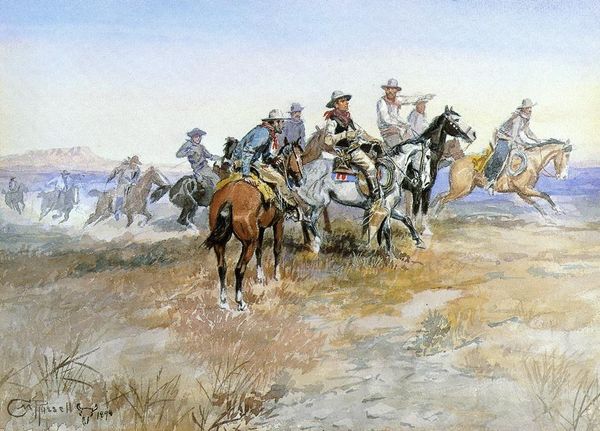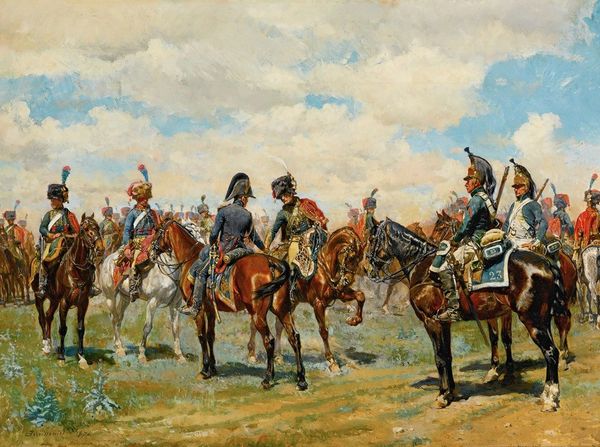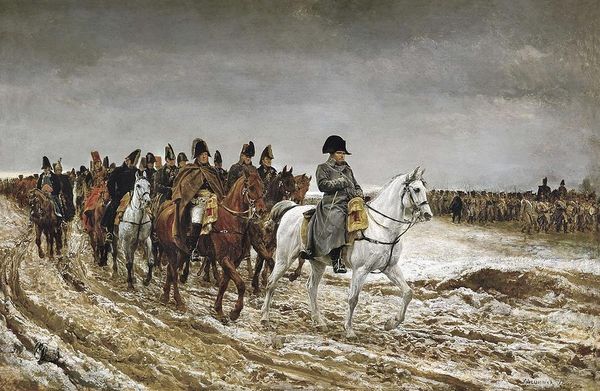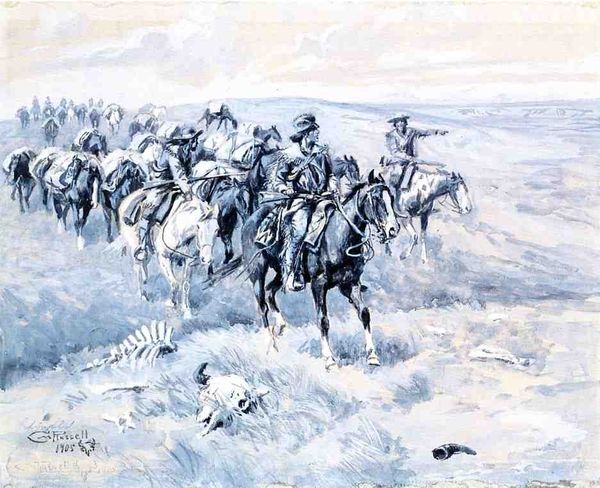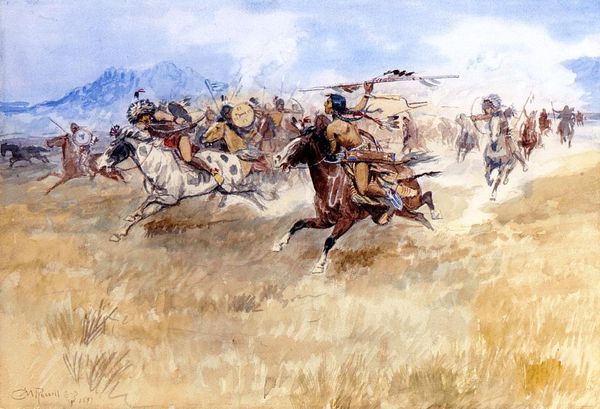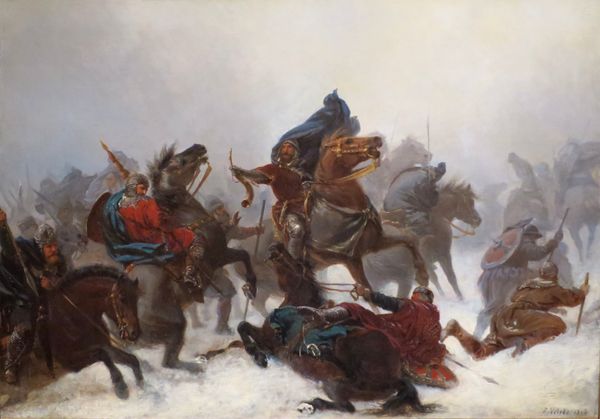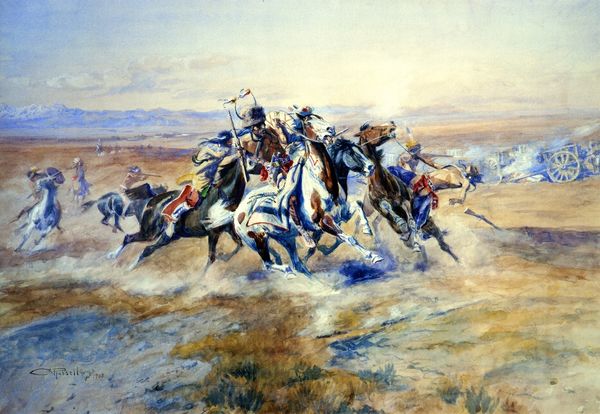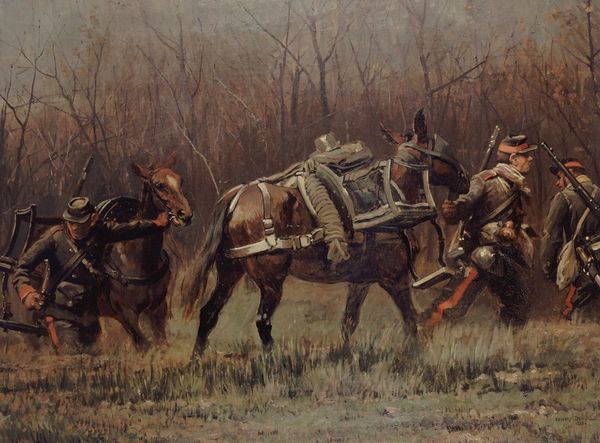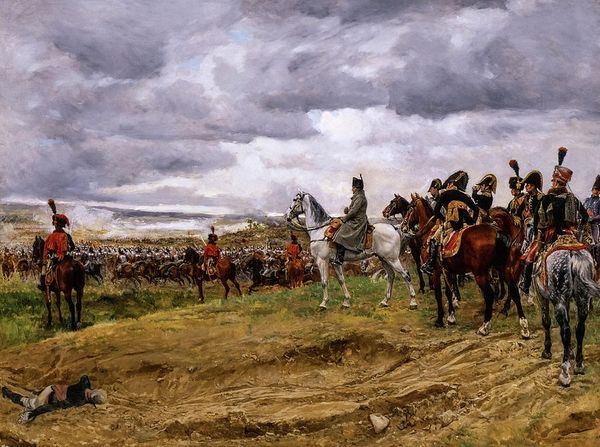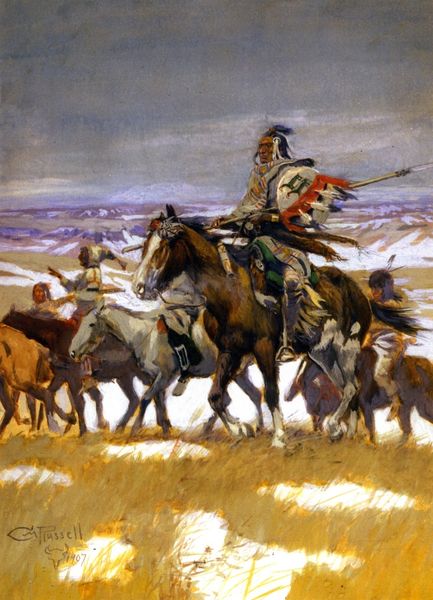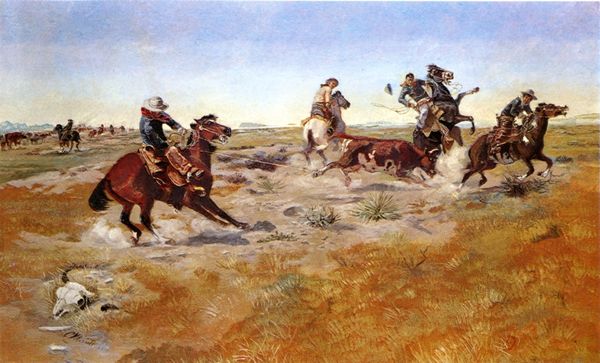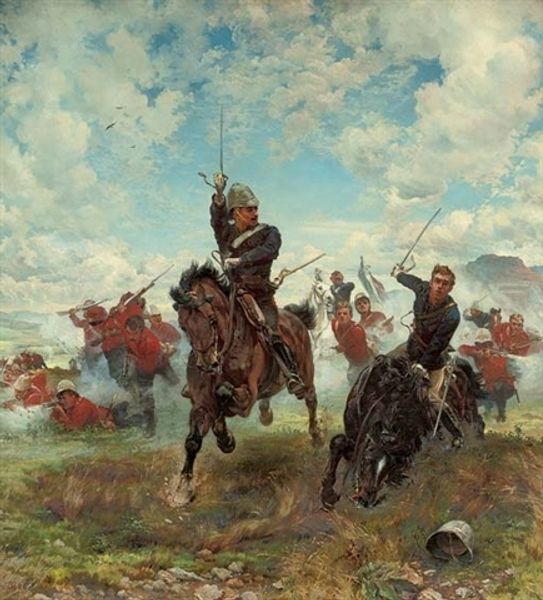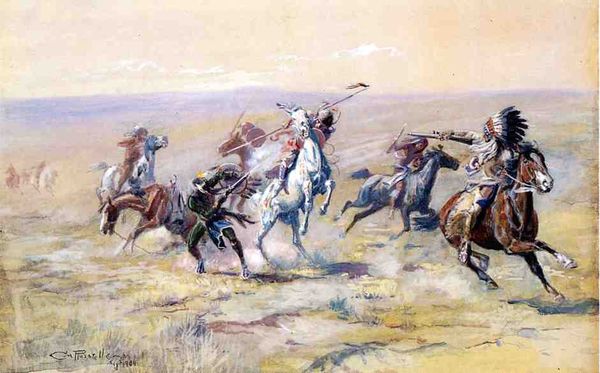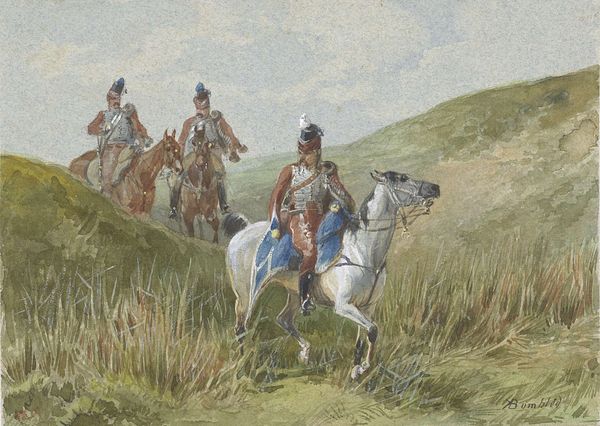
Dimensions: 52.3 x 109 cm
Copyright: Public domain
Curator: Immediately I'm struck by the movement—you can almost feel the splash of the mud. Editor: That's exactly what I sensed! Now, let me introduce you to Józef Chełmoński's painting, "Four," completed around 1880. It's an oil on canvas, and look at this—the dramatic energy! What symbols are really capturing your eye here? Curator: For me, it’s those four horses abreast—the raw power of the animal juxtaposed with this, I assume, humble work in the background. It's all about that untamed strength yoked to human purpose. This symbol echoes through many cultures—what's more, note how they drive through what looks like endless swampland? The suggestion is clear: The only escape from stagnation or death comes through work, through forward progress, through struggle, despite conditions of oppression and weather like that hanging over them. Editor: You’re reading such deep purpose in that image! I also like the somewhat awkward and almost amateur way the bodies of the coachmen are drawn. Curator: Amateur? Editor: Well, Chełmoński's real genius and passion, what's rendered with real vitality and finesse, is his study of the horses in movement. The contrast interests me—he’s a realist first. But these little guys—their costumes or the lines of their shoulders—he doesn’t linger. It suggests to me an impatience with society portraits. I would wager it’s the study of movement and light, not portraiture or genre scenes that moved him. I imagine this was not painted to please wealthy families but at least partially to satiate his own painterly and philosophical preoccupations. Curator: Ah, a window into the artist's soul! I appreciate that view of artistic priorities shaping the composition—it complements the symbolism quite nicely, I think. The road of work, indeed, as depicted in landscape and symbol is as vital, alive, even furious, as a tempest. Editor: Absolutely. Chełmoński gives the horses agency, and the painting becomes, as we experience it today, much more compelling and interesting because it isn’t weighted down with old commissioned notions or old, very formal aesthetic values. It has its own aesthetic. Thank goodness! Curator: That's a beautiful, organic take, and food for thought when we consider "Four's" place within 19th-century genre painting. I feel like this work invites a whole cultural examination of man and beast yoked to purpose and the creative artist untamed. Editor: To motion!
Comments
No comments
Be the first to comment and join the conversation on the ultimate creative platform.
